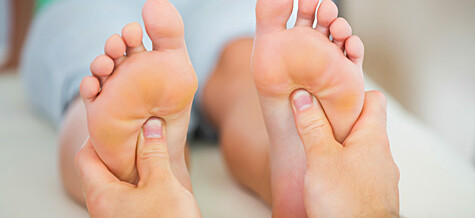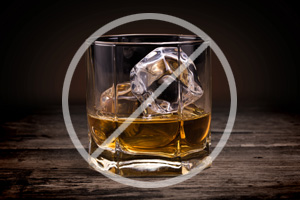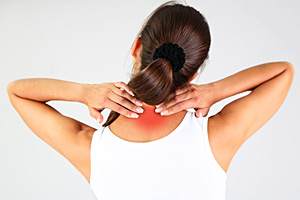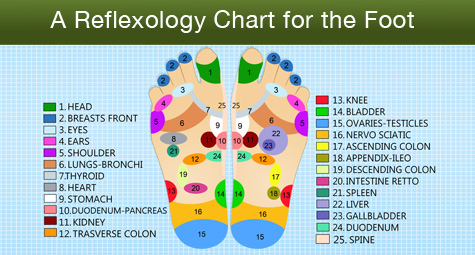
Did you know that the human foot and ankle contains 26 bones, 33 joints, more than 100 ligaments, muscles and tendons? The bones in both of your feet added together make up about 25 percent of all the bones in your body. Our feet carry an incredible load everyday and yet are typically the least pampered parts of our bodies. Many cultures have practiced foot massages for years as an alternative to medicine in promoting good health and wellness. And WHO doesn’t enjoy a good foot rub?
Read on to see how one can practice simple, daily techniques that not only feel great but also benefit your health in huge ways. And by finding a certified reflexologist, you can maximize wellness even more!
Over the years, I’ve had several people ask about reflexology. I’ve entertained questions such as: “Is it painful” or “is it just a really good foot massage?” To be honest it DOES feel wonderful, but it’s so much more than that, especially when reflexology is part of a total body wellness plan.
Massage Vs. Reflexology
A massage is primarily a manipulation of muscles, while reflexology is the gentle stimulation of reflex points as part of “zones” on our feet, hands, ears and face to restore the body to optimal functioning.
Here’s what I have learned about reflexology and try to explain when asked:
For those of you who aren’t familiar with reflexology, it’s an ancient form of non-invasive, non toxic, natural bodywork designed to bring the body into balance. It works to decrease tension and stress in the body. This healing practice is based on the principle that our organs and glands are all connected to specific pressure points on the locations within zones. (it might sound complicated, but it really isn’t )
On the foot, which is what I will address in this post, these points are located on the soles, ankles, toes and upper part of the foot. One can easily learn techniques that can be self-practiced for relaxation, alleviation of headaches, reduction of stress in the head and neck. When you practice reflexology before bedtime, you are promoting improved circulation and relaxation, which results in a better night’s sleep. For other health issues, I recommend finding a certified reflexologist who will apply firm, but never painful pressure to particular areas on the feet with specific thumb, finger or hand techniques.
In addition to promoting general good health, a certified reflexology practitioner is often trained to assist with other health issues such as:
- Insomnia
- Depression (National Institutes of Health)
- Pain
- Chemotherapy -induced nausea (National Cancer Institute)
- Chronic constipation in children ages 1-12 (very successful outcomes)
- Colic in babies
- Migraines and tension headaches
- Sinusitis
- Varicose Veins
- Fibromyalgia
- Hormonal imbalances
- Fertility issues

It is possible to practice Reflexology of the feet yourself, though it may be enhanced by a certified practitioner.
As with many alternative therapies, there is a belief that “blockages” of our unique, vital “life energies” occur when the body is out of balance. Stimulation through reflexology increases circulation in the body, thus breaking through these blockages, and flushing out toxins and bringing our bodies back into balance.
I remember having a reflexology session last year at an airport on my way home from Raleigh, NC. My sinuses were getting congested and could feel a cold coming on. I had an extra 90 minutes before my flight, so I jumped into the chair and had a certified reflexologist work his magic on my feet, asking him to help boost my immune system. I immediately felt more energized.
Following the session, I was also reminded to drink lots of water since circulation and fluid flow had been increased. Upon arriving home and waking the following day, the symptoms were gone. I know that that practitioner and session truly kept me from progressing into a full-blown cold. I’ve also been ahead of the game with other impending illnesses with reflexology. Can you tell I’m a fan?
Other questions I’ve had include:
What does a typical reflexology session cost?
I’ve paid anywhere from $30 for 30 minutes to $80 for 60 minutes. I highly recommend that you search for a certified reflexology practitioner as others may just give you a great foot rub. I usually pay $40-$50 for an hour of reflexology with my certified practitioner. Remember rates vary from city to city; just find someone who is certified.
Are there Times that it’s best NOT to get reflexology?
While reflexology is a highly safe healing practice, there are a few instances when it may not be a good idea. These include:
- If you have any kind of foot fracture, wound or active gout.
- If you have vascular disease, please check with your doctor first. (a perfectly safe alternative would be reflexology using hands and ears)
- If you have any type of current thrombosis or free-floating blood clot.
- If you are within the first 6 weeks of pregnancy.
(Although there are many reflexology pressure points that can treat and alleviate common pregnancy ailments, there are some reflex points that, if pressed too hard, can induce labor) - If you have had any other type of touch healing within 48 hours as there could be an overload on your system. (I.E. massage, chiropractic, acupuncture)
Here’s a great site with more information on when Reflexology may not be the best thing for you: How To Do Reflexology

It’s best to avoid using alcohol before, during and after a self-care Reflexology treatment, as the treatment can have an unintended impact on the effects of the alcohol.
Important reflexology Tips:
- If practicing at home, it helps to be in a quiet room, with dimmed lights and with a blanket over the foot you aren’t working on to keep warm.
- Avoid drinking alcohol before, during and after giving yourself a reflexology treatment, as you may discover the treatment itself increases the effect of alcohol. Additionally, using alcohol in conjunction with reflexology may create more stress on the body’s organs as the body tries to process the reflexology treatment and metabolize the alcohol.
- Reflexology is a complementary healing art, and not a substitute for professional medical treatment.
- Always use warm oil for foot massages for ease and deep skin penetration. You can also use a foot roller or tennis ball to roll back and forth on the soles of your feet as well as the top of the foot for a nice home massage while you’re watching your favorite TV show or listening to soft music.
For Self Practice:
- You can find foot socks with reflexology points at Bed, Bath and Beyond or at many online vendors.
- Here is a site with diagrams that teaches a few easy, basic techniques: Do Reflexology
For more information on Reflexology and it’s history click here.

Reflexology need not be an occasional therapy, with some research and practice you can develop your own self-care regimen.
I can’t say enough good things about the positive benefits of foot reflexology. It is yet another complementary, non toxic, painless, technique that brings us the ability to help our bodies heal themselves. One source claims that there are records of it being practiced as early as 2330 B.C. by the Egyptian culture.
There are times when a medical issue warrants traditional medical treatment, there are other times when the medicine we need is right in our own hands. When we do require traditional medicine, studies show that reflexology can help us heal faster. Self-healing right within our fingertips!
An effective reflexology practice can include daily self-practice for health maintenance in conjunction with monthly sessions, as time and money allow, with a certified practitioner. And if you feel like you’re coming down with something, a session with a professional can help you nip it in the bud.
Next time you’re struggling with a headache, insomnia or some mild depression, instead of reaching for the pill bottle in the medicine cabinet, why not try applying a little reflexology on yourself?
Every time I hear or read about the side effects of many pharmaceuticals, it makes me wonder, “why would anyone take this stuff?” I know you’ve heard them too… “Thoughts of suicide, rash, blurry vision, un-funny discharge, possible death, stroke, heart attack, paralysis, shortness of breath…” The list goes on. Reflexology has far fewer negative side effects. You do have healthy choices!
Give yourself the gifts of relaxation, great health AND happy feet!
Sources:
Top 10 Home Remedies
University of Michigan
University of Minnesota — Center for Spirituality & Healing; Charlson Meadows
Article Alley
Eco-Mothering
Peace on the Hill
Share:
FEB

